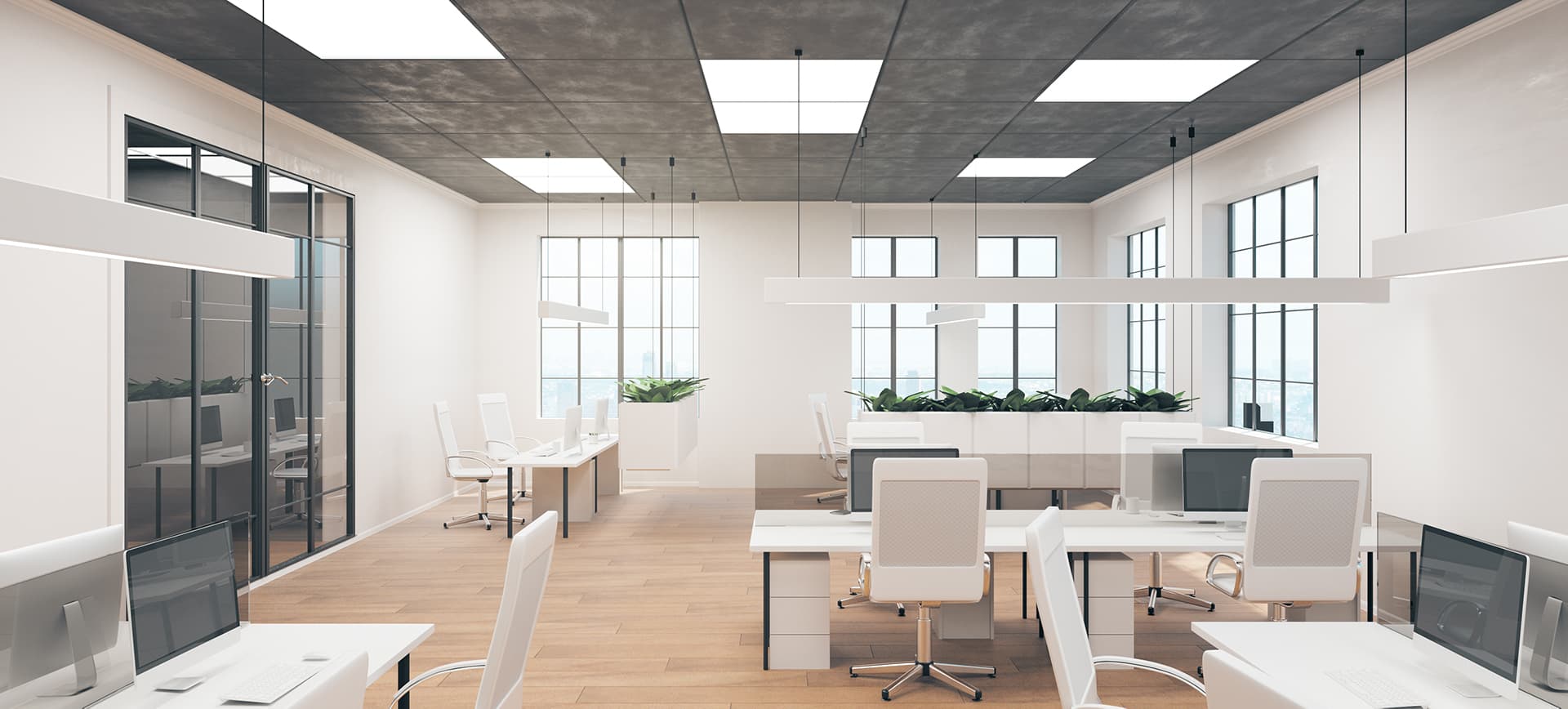Office lighting is challenging because many offices are open-plan offices, where not only people with different jobs but also people of different ages work in the same space. As we know, people of different ages need different amounts of light to see the same things. A 60-year-old already needs at least four times as much light as a 20-year-old to see the same way.
In addition to this, the display screens and their reflective surfaces bring challenges. The direction of the light must be thought through carefully. It is also important to minimize the glare of the lamp. And if you add a difficulty factor, there are also preferences for different color temperatures.
Reconciling all these things is challenging. Of course, almost anything is possible for lighting fixtures. Here are some options:
1. All lamps are so-called as general lighting on or off the switch and with the same power.2. The lamps have smart features, which can be:a. Motion detector/presence detector
This means that the lamp's sensor recognizes when a person is working in its area of influence.
b. Daylight sensor
The lamp detects the amount of daylight coming from outside and adjusts the amount of light coming from the lamp accordingly. So the purpose is to have even lighting all the time. At the same time, energy is saved.
c. Dimmer
The lighting can be dimmed/brightened either with a separate switch or with a mobile phone application. The lamp also remembers the previous setting and lights up at the same level it was last set to.
d. Color temperature adjustment
The color temperature of the light can be adjusted from yellow to white.
e. Light also upwards
Light can be obtained from the lamp not only downwards, but also upwards.
However, it is important to create sufficiently good general lighting in the space and, in addition, workstation-specific lighting solutions that everyone can adjust according to their taste.
With the AD Green office lamp, it is possible to implement all of the above. The lamps can also be grouped, if desired. Certain lamps can be adjusted together to the same light level and turn on, for example, when movement/presence is detected.
